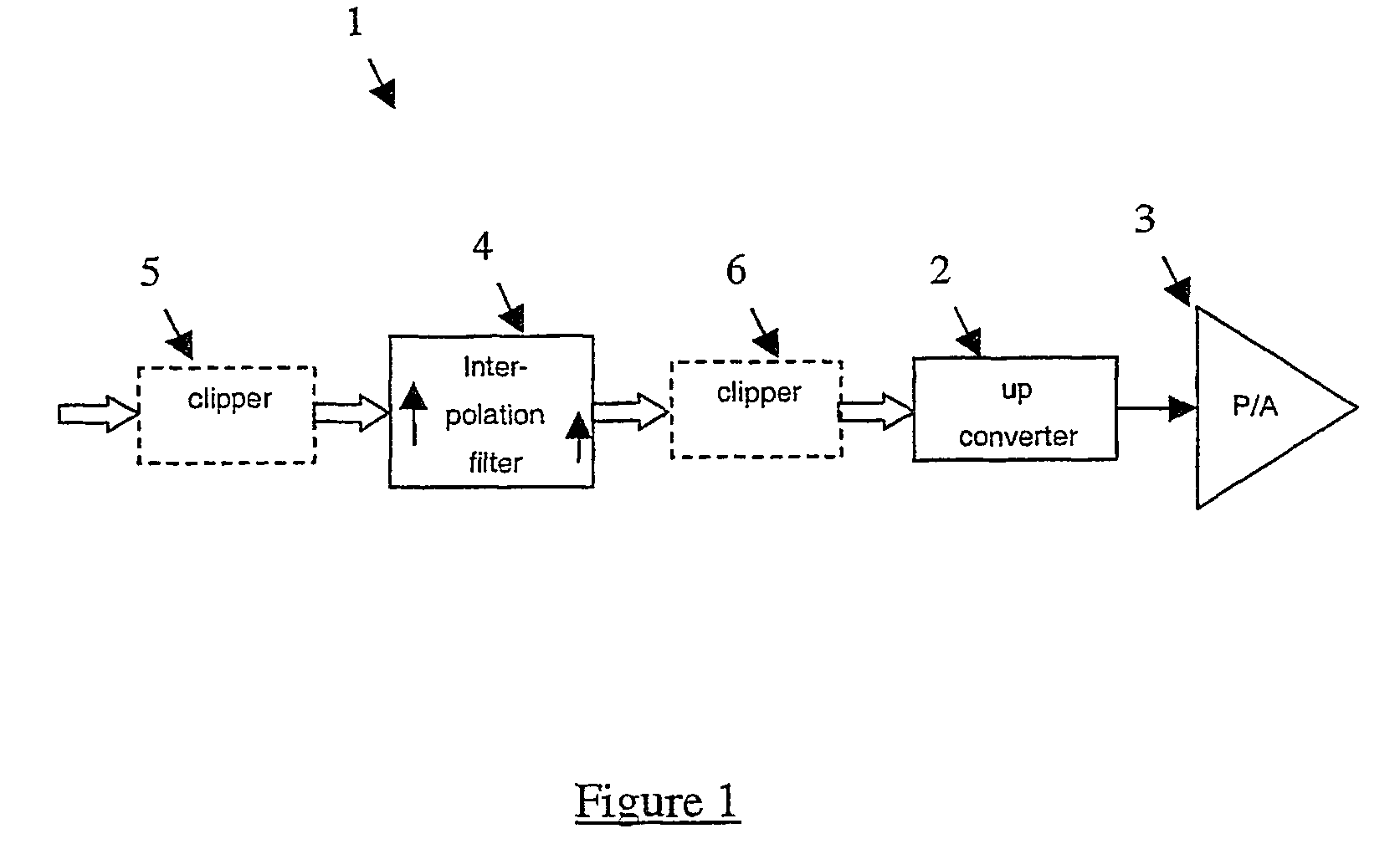Signal peak reduction circuit for non-constant envelope modulation signals
a signal and envelope technology, applied in the field of circuits and methods for reducing the signal peaks of telecommunications signals, can solve the problems of amplifier saturation, large and costly amplifiers, and high power requirements, and achieve the effect of reducing amplifier saturation and reducing telecommunications signal peaks
- Summary
- Abstract
- Description
- Claims
- Application Information
AI Technical Summary
Benefits of technology
Problems solved by technology
Method used
Image
Examples
Embodiment Construction
[0042]Referring now to FIG. 2, there is shown generally a schematic diagram of a signal peak reduction circuit 10 according to the present invention. The circuit 10 includes a zero bit stuffer 11, a predictive interpolation filter 12 and band-limiting filter 13, a delay line 14, a clipping processor 15 and a signal-summing device 16. Input I / Q data symbols, d(r), are zero stuffed by the zero bit stuffer 11 to form a signal x(n)—as shown in FIG. 4(a)—and then fed to two successive identical or closely matched filters 12 and 13 for interpolation. The filter 12 is a predictive filter that models the response of the second filter 13 and optionally any subsequent filtering prior to the P / A to the data bearing signal from the zero bit stuffer 11. The predictive filter 12 is used for predicting peaks in the data bearing signal and providing an output signal to the clipping processor 15 for generating the compensation signal in response to the detected peaks, in this case a correction vecto...
PUM
 Login to View More
Login to View More Abstract
Description
Claims
Application Information
 Login to View More
Login to View More - R&D
- Intellectual Property
- Life Sciences
- Materials
- Tech Scout
- Unparalleled Data Quality
- Higher Quality Content
- 60% Fewer Hallucinations
Browse by: Latest US Patents, China's latest patents, Technical Efficacy Thesaurus, Application Domain, Technology Topic, Popular Technical Reports.
© 2025 PatSnap. All rights reserved.Legal|Privacy policy|Modern Slavery Act Transparency Statement|Sitemap|About US| Contact US: help@patsnap.com



